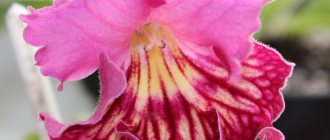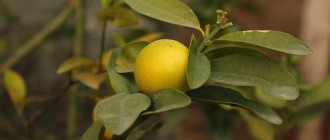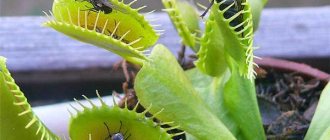Buy seedlings
A fairly large number of varieties of peonies are distinguished by the tenderness of their inflorescences due to the amazing shade of the petals. This trait is also characteristic of the variety of this plant called Monsieur Jules Ely. As soon as you see it, you will love it and will surely become a true treasure of your flower garden.
Features of Terry Bomb Peony
This plant was named after the deity of the ancient Greeks - Paean.
Paean healed the Olympian gods from illnesses. Most species are also “healers.” They are used in the treatment of diabetes and arthritis. They treat the kidneys and cardiovascular system. Used for poisoning, ulcers and varicose veins. But you should be careful when using this plant as a medicine.
Appearance
The appearance of the double bomb peony is good throughout the warm season. This species is a herbaceous perennial. The roots of the plant are tuberous and fleshy. The stems reach a height of up to 1 meter. The leaf has a dissected shape.
Terry bomb peony bush
The flowers have a strong double appearance. The saturation of the petals is so great that when fully bloomed, the flower looks like a ball or a bomb. It is because of this shape that this species received the name Terry bomb-shaped peony.
Color may vary.
Care
Regular care is required. Despite its beauty, it does not require special attention. When planted correctly, this garden worker will produce lush blooms every year.
Frost resistance
Frost resistance is excellent. In winter, even in cold regions, this plant does not freeze out without additional shelter. However, it is better to play it safe - trim the bushes and cover them.
Bloom
Flowering is annual and occurs at different times in different varieties.
All varieties of Terry peonies can be divided into certain groups depending on their flowering period
Based on when the plant blooms, peonies are divided into groups:
- from May 20 -31 – very early;
- from June 1-10 - early;
- from June 16 – medium and late.
Alarm Signals
The fact that the tuberous begonia plant is not satisfied with the growing conditions will be visible from its behavior and appearance. For example, dry spots appear on succulent leaves, which subsequently turn brown. This is a manifestation of a burn. In this case, the plant urgently needs to be removed from direct sunlight. And you will have to get rid of such leaves.
If young leaves begin to curl and turn yellow, this may be a sign of either a lack or an excess of moisture.
Therefore, it is very important to choose a watering schedule that suits the plant. When the leaves curl, it's time to humidify the air around the flower
And if they dry out, then the plant needs a cooler place.
The tuberous begonia indoor plant is exposed to a number of pests. The most common of these is the spider mite. At first, the insect itself is quite difficult to notice, because its size barely reaches 1 mm. They live in entire colonies, most often located under fallen or dry leaves. They need moisture to survive. Therefore, they pierce the succulent leaves, sucking the juices out of them. How to notice this? Numerous spots begin to appear on the leaves, and then they dry out. If the colony is large, then a web becomes noticeable on the plant.
So, tuberous begonia, the planting and care of which we discussed in our article, is a popular indoor plant. This plant has become widespread due to its long growing season, variety of flower colors, ease of care and aesthetic appeal.
Growing a flower
Thin-leaved peony (paeonia tenuifolia)
Gardeners of any level can cultivate this variety of peonies, since it is quite simple. It is recommended to remember a number of basic rules that will help you grow high-quality plants.
Planting with root cuttings
A root cutting is usually called a part of the root system with a growth bud and a root. They are harvested until white roots form. You can start planting cuttings in early August. To do this you should:
- Dig up the peony rhizome, remove the soil, remove rotten and dried roots.
- Divide into as many cuttings as possible (each should have a bud and a root).
- Soak the cuttings in potassium permanganate for 2 hours. Treat the cut areas with charcoal.
- Plant in the substrate at a distance of 18 cm from each other.
Note! It is recommended to protect the plantings from the sun at midday, water and remove weeds. Shelter is recommended in winter
In a couple of years it will be possible to find a new place for the plants.
Rhizome division
It is recommended to dig up peonies in order to replenish the supply of cuttings in the second half of August. It is worth planting either in September or early October. In this case, the seedlings are more likely to take root and survive the winter.
Selecting a location
Choosing a location is an important consideration for many flowers. Peony Monsieur Jules Ely is no exception. It is recommended to plant it either in sunny areas or in partial shade. Absolute shade can negatively affect flowering - it will not happen. However, when planting in the sun, it is recommended to find a way to shade the plant during particularly hot hours.
Important! It is not recommended to plant this peony variety near large bushes and trees, as it loves light. You should also avoid places where groundwater is too close to the surface, as this can cause rotting of the root system
How to prepare the soil and flower for planting
The soil for growing this type of peony should be light, well-permeable to air and water, and also be fertile. The best option is to choose loam. It is recommended to choose neutral acidity, since peony does not like acidic soil. To make the substrate, it is recommended to take peat, sand, humus and garden soil in equal proportions and mix thoroughly. It is also worth adding a small amount of wood soil and mineral fertilizers to it.
Depending on the method of propagation of the plant, the flower is prepared in a certain way. If we are talking about seeds, then it is worth following the rules of artificial stratification; if we are talking about root cuttings, disinfection with the help of potassium permanganate and charcoal is necessary. Treatment with a root formation accelerator remains the same.
Step by step landing procedure
There are not so many landing rules that you can make a mistake at least at some stage.
- It is worth digging a hole 60-70 cm deep and 1 m in diameter in advance. This is required so that the plant's roots can spread without problems.
- If the soil is acidic, you need liming; if it is loose, you will have to add humus; if it is dense, add sand; if the groundwater is located close to the ground, you should fill the bottom of the hole with drainage.
- Fill the hole halfway with the prepared substrate, place the seedling, carefully straightening its roots. The renewal bud should be located approximately 5 cm above ground level.
- Water.
The procedure is simple, and therefore even a novice gardener can cope with it.
Landing
Planting by seeds
The seed method of growing peonies is used either for selection or for obtaining a large number of plants. This method has a number of disadvantages: flowering may be delayed for 3-7 years, and only about a third of purchased seeds may sprout. If it is impossible to use other options for one reason or another, it is recommended to follow the step-by-step instructions.
When purchasing seeds, you need to pay attention to their appearance. If they are wrinkled, then it is better not to buy them, but shiny and smooth ones can turn out to be a real plant
First of all, it is recommended to keep the seed in warm water for 24 hours, and then soak it in a solution of potassium permanganate for a few more hours. Subsequently, it is recommended to treat the seeds with a growth stimulant.
You first need to plant them in a container, and after the first shoots appear, transplant them into open ground. In this case, artificial stratification is needed. This is done in the following way: the seeds are sent to the freezer at the end of April for a couple of months.
At the end of June, it is worth taking them out and planting them in the ground, placing the container with them on the windowsill. Boxes with seeds should be taken out into the garden and covered with spruce branches for the winter. In the spring, sprouts should emerge from the seeds and should be planted in the garden.
Tuber structure
The pulp consists of thickened, starchy, dense tissue. The tuber is covered with a corky crust, which becomes rougher as it ages (see photo).
Internal
You can only examine the internal structure of a potato using a fresh cut. The underground stem in section includes the following layers:
- epidermis - suberized cells of the periderm;
- cortex - parenchyma cells with starch grains;
- cambium - cambial cells with xylem elements;
- core - parenchyma cells with radial rays.
The core contains the least amount of starch grains. This is the coarsest part of the pulp.
External
Tuber is seed material for vegetative propagation of potatoes. On its surface there are 7-15 ocelli, 3 buds with rudiments of leaves and roots in each. Only the central bud grows, from which above-ground shoots and roots develop.
Does it depend on the variety?
The general structure of the potato tuber is the same for all varieties. The only difference is in the color of the potato pulp and skin and the ratio of the internal layers in thickness.
Varieties with white flowers
Yellow crown peony (paeonia yellow crown)
Many French heritage varieties have white flowers in varying shades. It can be white with a lemon tint, as in the profusely flowering variety 'Duchesse de Nemours' ('Duchesse de Nemours', 1856) or the extremely fragrant 'Enchantress' ('Enchantress', 1903).
White flowers with a lemon tint. Variety 'Duchesse de Nemours' ('Duchesse de Nemours'). Photo by the author
Pinkish when blooming and then lightening to pure white, the variety 'Madame de Verneville' ('Madame de Verneville', 1885), bred by Albert Crus, forms a lush bush with strong, non-lodging stems. The great advantage of this variety is the amazing aroma of roses.
Peony 'Madame de Verneville' ('Madame de Verneville'). Photo from the site baza.msk.ru
'Avalanche' ('Avalanche', 1886), synonym of 'Albatre' ('Albatre'), has white flowers with a light pink center and red markings on the petals. 'La Lorraine' ('La Lorraine', 1901) blooms in creamy caps with pink intensification towards the center. 'Madame Emile Lemoine' ('Madame Emile Lemoine', 1899) has pink speckling on the petals and red markings in the center.
Variety 'La Lorraine' ('La Lorraine') - cream caps with pink saturation towards the center. Photo from the site cvetochnik116.ru
The very late variety with fragrant white-cream flowers 'Marie Lemoine' ('Marie Lemoine', 1869) is magnificent, as well as the creamy one with a light pink tint, now extremely rare 'Solange' ('Solange', 1907) . Lemoine variety 'Primevere' ('Primavera', 1907) - creamy white with red markings, yellow base of petals in the center, turning white at the end of flowering.
Variety 'Primevere' ('Primavera') - creamy white flower, in the center there is a yellow base of the petals. Photo from the website sadovod-proskurina.ru
Another stunning historical peony with an amazing scent and large pink-cream-white flowers with a yellow highlight in the center is 'Madame Jules Dessert' ('Madame Jules Desser', 1909). Or the famous Lemoine variety, which was once very popular, 'Le Cygne' ('Le Signe', 1907) - white with a yellow highlight, with dark green folded leaf blades. The white and pink variety 'Argentina' ('Argentina', 1924) is also magnificent.
The 'Argentina' variety is excellent. Photo from commons.wikimedia.org
But perhaps the most famous of the white French peonies is the famous variety 'Festiva Maxima' ('Maxim's Festival', 1857), it is also the most common and recognizable - blooming profusely, with carmine-red markings on pure white petals. Large pink-shaped flowers, exuding a wonderful rose aroma, hold well on strong stems. The variety is distinguished by its vitality, high resistance to disease, and is excellent for cutting.
The famous variety 'Festiva Maxima' ('Maxim's Festival')
Peonies in the garden
Peony rubra plena (paeonia rubra plena)
The function of the peony is to decorate the garden. But there are some other features:
if you plant flowers in a line, they will delimit the space of the site into zones; with the help of this plant they focus attention on the desired object (for example, peonies at the entrance to the gazebo);
good as a 2nd tier (for example, low-growing plants are planted, and then a wall of hops. The middle tier is necessary); Terry Bomb-shaped peonies are used to decorate the garden plot
Terry Bomb-shaped peonies are used to decorate the garden plot
- cover not very attractive places (if you plant them in front of the house, you can hide the not very decorative bottom of the facade of the house);
- Great for edging paths.
Plant peonies so that they become a real treat for the eyes.
Use Cases
Peony red charm (paeonia red charm)
For Monsieur Jules Elie, it will not be difficult to find a place in the garden, flower garden or front garden. Its pink flowers with a lilac tint contrast wonderfully with the bright background of the grass lawn and the dark green needles of evergreens - junipers, spruces, thujas, fir, boxwood, and pine trees. In mixed plantings, Monsieur Jules Elie goes well with fragrant herbs and cereals with silver leaves and lilac, blue, pink, and white inflorescences. The plant can be placed near the gazebo, planted along the fence, in the foreground of the site, at the front entrance to the home. Large peony flowers are suitable for cutting.
Peony Duchesse de Nemours - what kind of variety is it, history of creation
The variety was bred by agronomist from France Calot in the mid-19th century. At that time, in order for an ornamental plant to become popular, it was necessary to work hard to create important properties: a refined aroma, purity of color and double inflorescences. The delicate paeonia Duchesse de Nemours met all the above requirements, and therefore quickly became in demand among flower growers.
Pion Duchess de Nemours
Brief description, characteristics
Peony bushes are tall. An adult plant reaches a height of 1 meter. As the plant grows and develops, the perennial grows quite quickly. The ornamental crop has a strong root system, thanks to which one plant can grow from 7 to 10 years. The varietal herbaceous peony Duchess de Nemours belongs to the Lactiflora group.
The medium-sized shrub has many shoots that create volume and splendor. The culture has dissected dark green leaves. The sophistication of the plant is added by milky-white flowers with a yellowish tint and greenish at the base of the petals. When open, the flowers reach a diameter of 15–20 cm. The Duchess de Nemours peony blooms for 15 to 20 days in mid-summer. The flowering bush is distinguished by its lushness and pleasant aroma, reminiscent of the scent of lily of the valley.
Additional Information. Cut peony flowers retain their decorative appearance for no more than a week.
Advantages and disadvantages of the variety
A decorative flower has a number of important advantages:
- unpretentiousness to growing conditions and care;
- annual abundant flowering;
- resistance to frost and other unfavorable climatic conditions;
- stable immunity to most fungal and bacterial diseases characteristic of other varieties of peonies;
- the possibility of using flowers to decorate gardens, parks and to create compositions in cut form.
The variety also has some disadvantages that do not affect the demand for the crop. The main disadvantages are the short flowering period of the bush, as well as the short period of preservation of its decorative properties when cut.
Use in landscape design
The milky peony looks great in group plantings with dark varieties of crops with the same flowering time. Single bushes look organic in any flowerbed or local area. The most abundant flowering of bushes is observed at the age of 4 to 10 years. This variety is ideal for decorating summer cottages and city parks.
Peonies in the park
Is fern edible?
Fern is a herbaceous perennial crop, one of the brightest representatives of the Osmundaceae family. Outwardly it looks like a green stem with pinnately dissected leaves. The plant's homeland is considered to be the Far East, Northern China, and Korea. Most often you can find ferns in the forests of Central Asia, Russia and Ukraine, Mexico and Asia. But they also grow in deserts and swamps.
Some types of ferns are poisonous, but there are also quite edible specimens among them. In general, edible plants are slightly smaller in size compared to inedible ones. Eating ferns are entirely herbaceous and bright light green in color, while poisonous ones have dark green foliage with red dots.
Attention! Eating fern raw is not recommended. Eating raw shoots will not lead to life-threatening conditions, but there is a high likelihood of mild poisoning
Varieties with red flowers
'Aviateur Bleriot' 'Linne' 'Marechal Mac Mahon' Famous late variety 'Marechal Mac Mahon'. Photo from photoshare.ru, author Tatyana Komarova'Inspecteur Lavergne' 'Felix Crousse'Bomb-shaped 'Felix Crousse' ('Felix Crousse'). Photo by the authorLook at a selection of peonies of French selectionPeonies in my garden. Variety 'Sarah Bernhardt' ('Sarah Bernhard') and 'Karl Rosenfield' ('Karl Rosenfield'). Photo by the author
- Peonies are a real decoration of the garden! Reproduction, planting, care
- Peonies: types and varieties
- Peony's finest hour
- Peonies you can be proud of. Masterpieces of domestic selection
- What is the secret of the popularity of American peonies?
- Peonies in landscape design
- 10 tips for peony lovers
Plant care
Spathiphyllum flower - propagation at home
Herbaceous peonies are unpretentious plants. Some species require virtually no care at all. Monsieur Jules Ely is more demanding than them, but even he is not as picky about the soil, pests and bacteria, and also about watering. But in order to wait for beautiful flowering, it is recommended to follow certain recommendations.
When growing peonies, certain rules must be followed.
Watering and fertilizing
Peony Monsieur Jules Elie needs regular watering - 1-2 times a week, 1.5-2 buckets per bush. It is recommended to use well-settled warm water, since cold and hard water can lead to a deterioration in the health of the flower.
Important! The bush needs fertilizing periodically: in the spring it is worth adding nitrogenous substances, they can be organic matter, and in the summer mineral complexes that contain calcium, phosphorus and potassium are used as fertilizers
Mulching and loosening
Mulching and loosening are important stages of plant care. They need to be produced to keep the soil moist for a long time, but not to make it heavier. It is worth loosening 2 times a month after watering. It is also worth removing all weeds. Mulching is done with compost, dry grass or sawdust.
Preventative treatment
Herbaceous peonies can suffer from diseases, despite being highly resistant to some species. To avoid this scourge, it is recommended to treat the bushes 2-3 times a season with Bordeaux mixture, copper oxychloride or foundationazole. These preparations contain copper and therefore can be used for medicinal purposes.
How to open closed buds?
Sometimes flowers are cut before the buds open. This allows you to increase the duration of flowering at home. Special care is required to open the buds.
- Flowers should be in water at a level of 8-10 cm. In this case, it is necessary to constantly monitor its level.
- The ends of the stems need to be trimmed every 2-4 days.
- You can add a little sugar to the water to make the flowers last longer.
- The vase should be on the sunny side, then the buds will open faster.
Plant care
The plant is very unpretentious and does not require careful care. He still needs some procedures. Otherwise, it will grow poorly or not bloom at all.
Watering and fertilizing
Peonies need plenty of watering. They especially need moisture during the period of rapid growth, before flowering and in the fall when laying new flower buds. Water regularly, but do not over-moisten the soil. Stagnant water is harmful to the plant. One bush requires up to 30 liters of water during watering
Water carefully so that water does not get on the leaves and shoots.
Watering is an important component of care
During spring growth, peony requires root feeding with nitrogen fertilizers. In addition, it is useful to foliar fertilize with mineral fertilizers. This procedure is carried out monthly until flowering ends.
Mulching and loosening
After each watering, loosen the soil under and around the bush. This prevents the soil from drying out and helps retain moisture for a long time. The loose soil is covered with mulch so that it does not dry out too quickly and there are no sudden changes in temperature at the root of the plant. Shredded bark, straw, peat,
Preventative treatment
As a preventive measure, the soil around the plant is treated with a solution of potassium permanganate. 2-3 g of dry matter are dissolved in 10 liters of water. Treatment is carried out in early spring after the snow melts. This destroys fungi and pathogenic bacteria.
Have you been imprisoned? We look after and feed
After the plant is planted, it requires abundant watering.
In the future, the plant does not require special care, however, watering, loosening, weed and pest control should be regular.
In the second year after planting, you should not expect vigorous flowering from the plant. The flower will begin to delight with caps of inflorescences by the third year. And the flowers will begin to bloom in May.
Fertilizing with organic or complex fertilizer is needed during the budding of Terry Bomb-shaped peonies
In the third year after planting, additional feeding will be required:
- 1 feeding - in the spring, after the snow melts. It should be fed with urea (10 g per bush).
- 2nd feeding will be during budding.
- 3rd feeding – at the beginning of flowering (nitrophoska, 1 tsp for each bush).
- 4th feeding – after flowering, 2 weeks later (add 1 tbsp superphosphate, 1 glass of ash).
It is better to give fertilizers in dissolved form.
Fertilizers should not fall on the neck of the bush.
Peony blossom Monsignor Jules Ely
Peonies of this variety are especially beautiful during flowering. They are grown for their large and fragrant flowers. Care during flowering will extend this period and ensure the growth of buds in the next season.
Period of activity and rest
The active growing season begins in early spring. The plant grows green mass and forms buds. Peony Monsieur Jules Elie begins to bloom in early June. The duration of flowering depends on lighting, care and age. The bush can continue flowering until the middle or even the end of July. In winter there is a period of rest, which lasts until the beginning of spring. During the dormant period, the above-ground part of the plant dies.
Care during and after flowering
During flowering, the plant needs regular and abundant watering. Fertilizing for flowering plants is also required. After flowering ends, feed with compounds containing potassium and phosphorus.
Additional Information! After flowering ends, it is recommended to reduce the frequency and intensity of watering.
What to do if the peony does not bloom, possible reasons
Sometimes the peony refuses to bloom. There are several reasons for the lack of flowering:
- lack of lighting;
- large landing depth;
- small planting material;
- plant age.
Important! If the bush is very old, it is advisable to replace it with a young plant
Regular feeding of flower crops
At the very beginning of the growing season, the plants are fertilized with nitrogen. When small buds are just being laid and until the end of the season, phosphorus and potassium should be added to the soil. During active flowering, the shrub needs three components - nitrogen, potassium and phosphorus. At the same time, fertilizer rates should be moderate. After all, in an effort to help a plant, you can cause a lot of harm to it. For example, if you overdo it with nitrogen, you can provoke the development of rot. Plants should be fertilized after preliminary watering of the soil, on moist soil. This eliminates the possibility of burning the root system of the bush. Read the article: Remontant strawberries: a review of small-fruited and large-fruited varieties.
Peony Monsieur Jules Elie - what kind of variety is it
From the name of the peony Mons jules elie you can guess that it has French roots. The variety was bred in 1888. This is a milky-flowering peony, which belongs to the herbaceous perennials.
How the Monsieur Jules Ely variety blooms
Brief description and characteristics
The Monsieur Jules Ely shrub is quite small, can reach up to 1 m in height. The branches are erect, branched and strong with matte dark green foliage. Against their background, pink double inflorescences in the shape of a bomb look especially attractive. The diameter of the buds varies around 20 cm. The lower petals of the bud are quite large, slightly bent. The central ones are curved inward and smaller ones.
For your information! The flowers have an attractive aroma.
Advantages and disadvantages of the variety
Among the advantages of the plant are the following:
- high frost resistance;
- high immunity;
- unpretentiousness;
- highly decorative;
- Suitable for both cutting and landscaping.
Peony Mons Jules Ely has a lot of advantages that its only drawback cannot cancel out. It lies in the fact that in the shade you can either not wait for flowering at all, or the flowers will become much smaller. It’s very simple to deal with this - use another place for planting.
Use in landscape design
Bushes are used mostly in the garden or flower garden. They go well with aromatic herbs or grains. The plant can decorate gazebos and the entrance to the room. However, the Julie El peony can be useful for creating bouquets.
Jules Ely inflorescences close up
Take a closer look at your nameless peonies - there may be French aristocrats among them
Features of care
You will probably be surprised to learn that literally until the middle of the last century, all peonies in our country came from France. Of course, we remember our grandmother’s village front gardens, where several nameless bushes usually grew: a couple of early red ones, a few pink ones and always a white one. Naturally, no one knew the names of the varieties, and, in fact, did not even think about it. Pieces of peonies were purchased at markets and traded with neighbors and differed only in color.
But it must be especially said that among the herbaceous peonies there are no absolutely outbred peonies, without clan and without tribe. Any of them necessarily belongs to some sort; it’s just that over the years, wandering from front garden to front garden, he has lost his name, like impoverished nobles who have lost their origin.
Meanwhile, all of our grandmother’s nameless bushes are the heirs of those peonies that were bred more than 100 years ago in France, where the center for the selection of these plants was located since the 19th century. Such originators as Calot, Cruz, Lemoine, Desser, Millet, Doria, Rivoire worked there. France then essentially became the second homeland of the peony, which came to Europe from China.
In pre-revolutionary Russia, peonies brought from Europe were initially grown in botanical gardens and pharmaceutical gardens and used as medicinal plants. Then they began to be planted in noble estates, and subsequently, after the revolution, they scattered from the ruined noble estates into the village front gardens. Actually, our people’s idea of what a classic peony should be was formed under the influence of French varieties.
First of all, a peony should exude a wonderful aroma - without a smell it is not a peony at all, as most people think. Absolutely all the old classic varieties created by French gardeners are distinguished by a strong scent - lilies of the valley, old roses, lilac or carnation, jasmine or citrus. And they all bloom with lush double flowers of pink, crown, spherical or hemispherical shape.
Diseases, pests and ways to combat them
Peony ITO Yellow Crown is quite resistant to various lesions. However, improper care can lead to serious consequences.
Most often the culture becomes infected:
- rust;
- gray mold;
- brown spot (cladosporiosis);
- brown spot (septoria);
- root rot;
- powdery mildew;
- ring mosaic of leaves;
- Lemoine's disease.
If the disease is detected, it is immediately recommended to collect the affected areas and burn them. Sometimes you have to destroy the entire plant. To avoid this, preventive treatments with appropriate medications will help.
Pests of yellow peony:
- aphid;
- bronze beetle;
- root-knot nematodes;
- ants;
- thrips;
- fine hop strand.
A soap solution or treatment with insecticides such as Actellik, Fitoverm, Confidor, etc. will help fight them.
Despite the difficulty of breeding and the high cost of planting material, gardeners are very willing to grow this variety. The charming perennial is more than worth all the costs. Sunny, fragrant buds win hearts forever.
https://youtube.com/watch?v=5X-M7SWE5E4
Features of care
Like all peony plants, “Monsieur Jules Ely” loves sunny places and neutral loamy soils. A plant growing in partial shade will also feel good, gaining green mass, but it will not delight you with beautiful flowering.
Water the plants abundantly, not allowing the water to stagnate. In the spring, when rapid growth begins, during the formation of buds and the flowering period, as well as at the end of summer when new buds are formed, peonies need watering. One adult plant requires up to three buckets of water.
In the spring, after the snow melts, the soil near the bush is disinfected with a solution of potassium permanganate (2–3 g of substance per 10 liters of water). One bush needs 5 liters of solution. As the peony begins to grow, it is fed with fertilizers containing ammonium nitrate. Once a month, the bushes are watered along the foliage with a solution of any complete mineral fertilizer (according to the instructions). To make the solution stick to the leaves, add laundry soap to the water. You can also use dry fertilizers by working them into the furrow around the bush and then watering it.
In autumn it is time to trim and replant peony bushes and prepare the plant for winter. This does not present any particular difficulties, since “Monsieur Jules Ely” overwinters in the open ground, without requiring additional shelter, except in winters when severe frosts and little snow cover are expected. However, young plants should be covered in any expected winter.
When the leaves and stems of the plant wither, they are cut off at soil level. All withered tops are burned to prevent the development of diseases and pest damage. Harmful insects can hide in the axils of the leaves. The treated bush is sprinkled with several handfuls of wood ash.
There are times when peony bushes need to be pruned ahead of schedule. To avoid the death of the plant, the stems are cut so that 3-4 leaves remain on them. This method will allow the plant to lay new buds for next year.
Growing a flower
Correct landing first of all means choosing the optimal place. Proper care will be required in the future.
Planting with root cuttings
Only young specimens are propagated by root cuttings. For this:
- A bush is dug up.
- Cut into pieces so that each has several shoots.
- The sections are sprinkled with crushed coal or cinnamon powder.
- The parts are planted in prepared holes.
What time does boarding take place?
If desired, the hybrid can be planted in spring and autumn. Flower growers advise carrying out work in early spring before the growing season begins. Before winter, the plant will take root well and become stronger.
Note! Autumn planting should be completed before mid-September. The reasons are the same - the plant must get stronger
Selecting a location
Although the yellow peony is a voluminous bush, it is still a grass, so it does not tolerate strong gusts of wind. Also, for good flowering, it needs maximum sunlight.
As a perennial that grows in size every year, the Yellow Crown peony develops best away from large plants. For the same reasons, it should initially be planted in a wide and deep (about 1x1 m) planting hole, at a great distance from groundwater.
How to prepare the soil and flower for planting
The flower will grow in one place for many years, so fertile soil is initially required. The optimal composition for it will be:
- humus (compost) - 20-30 l;
- wood ash - 0.5-0.7 kg;
- mineral phosphorus fertilizer (for example, superphosphate) or potassium sulfate, 200 g each.
The mixture is thoroughly mixed with the excavated soil.
Next, a peony is selected for division and dug up.
Step by step process:
The peony is carefully dug up. The roots are freed from the ground. The rhizome is divided into parts so that each piece of root has 3 or more buds.
Step by step landing procedure
Planting a crop looks like this:
- The young plant is placed in the center of the finished hole and covered with earth.
- Finally, the soil near the bush is compacted, watered and mulched.
Peony planting
Important! The upper buds should not be buried more than 5 cm
Planting with seeds (for selection)
It is possible to grow the ITO Yellow Crown peony from seeds, but it is not known what kind of flower will grow. Varietal characteristics are almost never preserved. The process itself is quite long and complex. Sometimes you have to wait up to five years for sprouts.
The seeds themselves should be collected immature (in mid-August) and stratified. To do this, they are placed in a damp substrate (for example, sand) and heated to a temperature of 30 °C. Then the crops are cooled for a day in the refrigerator and heated again.
If the outcome is successful, at the end of 3 months the seeds hatch. Then they are planted in peat for another 3 months and kept at temperatures from 5 °C to 10 °C.
Note! A growth stimulator will help improve root formation. Seedlings with real leaves are placed in a bright, warm place before planting in open ground.
Seedlings with real leaves are placed in a bright, warm place before being planted in open ground.
Peony Monsieur Jules Ely (herbaceous)
It's easy to place an order on our website. Simply add the selected items to your cart, then go to the Cart page, check that the items you ordered are correct, and click the “Checkout” or “Quick Order” button.
The “Quick Order” function allows the buyer not to go through the entire ordering procedure on their own. You fill out the form, and after a short time the store manager will call you back. He will clarify all the conditions of the order, answer questions regarding the quality of the product and its features. It will also tell you about payment and delivery options.
Based on the results of the call, the user either, having received clarifications, places an order independently, completing it with the necessary items, or agrees to the order in the form in which it is now. Receives confirmation by email or mobile phone and waits for delivery.
Placing an order in standard mode
If you are confident in your choice, you can place your order yourself by filling out the entire form step by step.
Select the name of your region and locality from the list. If you did not find your locality in the list, select “Other location” and enter the name of your locality in the “City” column. Enter the correct index.
Depending on where you live, you will be offered delivery options. Choose any convenient method.
Choose the optimal payment method.
Enter your information: full name, delivery address, phone number. In the “Comments to the order” field, enter information that may be useful to the courier, for example: entrances in the house are counted from right to left.
Check that the information you have entered is correct: order items, location selection, customer information. Click the "Place an order" button.
Our service remembers user data, order information, and next time it will ask you to repeat the previous order data. If the conditions do not suit you, choose other options.
Online payment for your order
We include the necessary documents and receipts (delivery notes) in all parcels.
Delivery time is calculated from the moment the order is transferred to the delivery service in business days (on weekdays).
Delivery costs are calculated based on the total weight of the package (including the weight of packaging and marketing investments).
All online payments, with the exception of invoice payments, do not contain any commission for the buyer
When paying by credit card, you will be redirected to the YANDEX CASH payment gateway. The connection to the payment gateway and the transfer of information is carried out in a secure mode using the SSL encryption protocol. If your bank supports Verified By Visa or MasterCard SecureCode technology for secure online payments, you may also need to enter a special password to make a payment. This site supports 256-bit encryption. The confidentiality of the personal information provided is ensured by YANDEX CASH. The entered information will not be provided to third parties except in cases provided for by the legislation of the Russian Federation. Payments by bank cards are carried out in strict accordance with the requirements of the MIR and Visa Int payment systems. and MasterCard Europe Sprl.
We deliver throughout Russia!
We are ready to send your order to any location in our country. Immediately upon arrival of the goods, the transport company will notify you of the possibility of receiving your order.
The order is formed depending on the availability of goods in stores and warehouses; if the goods are out of stock, our manager will contact you for approval; we do not replace the goods without agreement with the buyer. Packaging usually takes 1-3 days. Immediately after dispatch, an up-to-date tracking code will be attached to your order, allowing you to track the movement of the order on the transport company’s website. This code will also be available in your account in the orders section.











